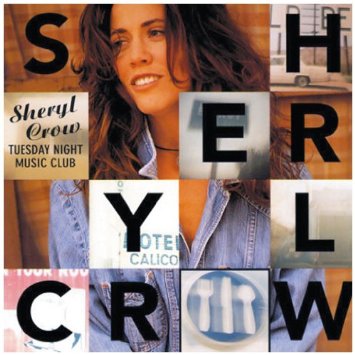The Washington Post has an article discussing the trend of automakers lately to pipe fake engine noises into the cabin:
Which raises a more existential question: Does it matter if the sound is fake? A driver who didn’t know the difference might enjoy the thrum and thunder of it nonetheless. Is taking the best part of an eight-cylinder rev and cloaking a better engine with it really, for carmakers, so wrong?
As someone who is a self-described car nut, I have complex thoughts about these synthetic noises. As I’ve lamented in the past both on this blog and on Twitter, it’s hard for me to come to terms with advancements in automotive technology.
I don’t like the thought of fake engine noises. It’s disingenuous, silly, and betrays the real soul of the car.
However, I have to admit to myself that I’d probably enjoy it.
I know that my car today may very well be the last car I ever own with a human-operated clutch. I know that it may be the last one I own with a completely authentic exhaust note. I know that my next car, likely with its dual-clutch gearbox and synthetic exhaust, is going to be superior to my car today. Doesn’t mean I have to like those “features” though.
At this very moment, I know I’m getting old.
Link via Scott Hanselman
I’d like to tell you a story about a musician you’ve never heard of.
Like most people, I would describe my taste in music as “eclectic”. Myke and I spoke about this on the latest episode of Analog(ue). I like everything from Mutemath to Ludovico Einaudi.
I think my peculiar tastes come from my parents. When we were growing up, music was always on around the house. All kinds of music. For most of my life, I’ve had very similar musical tastes to my parents. I grew up on Jimi Hendrix, Elton John, Billy Joel, Phil Collins, Chicago, and so many others. I still love them to this day. Nevertheless, there were a couple years when I was in my early teens where my tastes were dramatically different than those of my parents.
I’ll claim this as the pinnacle of my teenage revolt. I suspect my parents would disagree.
At the time, this was my jam. Seriously. I had the music video on LaserDisc.
One day, Dad put on something new and interesting: Toy Matinee. Specifically, Last Plane Out:
All of a sudden, things changed. My Dad and I loved this song, and in fact, this entire album.
Immediately we wanted to see what else was available by Toy Matinee. Unfortunately, this was their only album. Luckily not all hope was lost: there was a duo that were the driving force behind the album — Patrick Leonard and Kevin Gilbert.
Patrick Leonard is, among other things, a producer; his most notable collaboration is with Madonna.
Kevin Gilbert was a prolific songwriter and multi-instrumentalist. He had written songs for many artists, and produced for some of the best, including Michael Jackson. By the time Dad and I discovered him, he had already passed away, in a peculiar way. We immediately embarked on a joint mission to collect any of Kevin’s work. A grade schooler with nothing but time on my hands, I was the chief researcher. An adult with a job, Dad was the bankroll.
As we dug deeper, and we found more of Kevin’s material, we loved his work more and more. We also found our musical tastes merging again.
But more than anything else, we found a fascinating story.
Kevin Gilbert initially caught a modicum of fame by winning a music competition with a progressive rock group he fronted. By winning that competition he caught the attention of the aforementioned Patrick Leonard, and Toy Matinee was born.
Toy Matinee was effectively ignored by the record label, and as such, never really got a lot of airplay. Kevin toured with a handful of musicians — without Leonard — in order to try to support it.
Among those musicians was his girlfriend, Sheryl, on keyboards.

Around that time, Kevin was meeting with a collective of other musicians in Los Angeles on Tuesday nights to talk shop and mess around. This collective, self-titled the Tuesday Night Music Club, met every week to goof off and write songs. Kevin brought Sheryl to these meetings as well.
Over time, the club started working on songs with Sheryl. This resulted in an entire album, which Sheryl released. When choosing the title, she looked back to the club for inspiration. Sheryl named her album Tuesday Night Music Club.
Once Sheryl Crow’s album was released, it was extremely well-received and got tremendous airplay in the mid 1990s. Her single, All I Wanna Do, won Grammies in 1995 for Best Female Pop Vocal Performance and Record of the Year. Sheryl herself won Best New Artist.
Since Kevin was listed along with several other members of the Tuesday Night Music Club as songwriters for All I Wanna Do, Kevin won a Grammy thanks to Sheryl Crow.
However, over time, Sheryl downplayed the influence of the Tuesday Night Music Club. She
presented herself as effectively the creative tour de France force
behind the album. This naturally deeply bothered the members of the Tuesday Night Music
Club; all of whom were left to wonder where things went so wrong for them.
Soon after, Kevin and Sheryl broke up.
The way Sheryl Crow treated Kevin and the rest of the Tuesday Night Music Club unsurprisingly led to some hurt feelings. The easiest way to describe how Kevin felt is to use his words:
And I know that you believe each new invention of the truth
And I know the next five minutes are what you’re trying to get through
The man who really loved you and believed you all along
Has seen the truth and shuddered and is singing you this song…
…
I saw you on my TV taking credit for my work
And I knew if I said anything that I would be the jerk
There’s always some ex-boyfriend, some jealous has-been clown
Trying to muscle in the spotlight, trying to keep the lady down
As someone who doesn’t usually pay attention to lyrics of songs, I’m surprised to see myself quoting them. And this isn’t the only song of Kevin’s with lyrics I really love.
One of my favorite songs of his is Tea for One. As a lonely high schooler who fancied girls, but didn’t receive much attention from them, Tea For One’s lyrics spoke to me. Kevin’s lyrics hit home in a way that most lyrics didn’t, and don’t.
Standing amidst the subway
He spies the lady of his dreams
And catches her stare, long enough to make him care
"Oh my Lord, if beauty has a name,
then hers must be the same . . . "
Kevin was taken from the world at just 29 years old. I am nearly four years older than he was when he passed away. It makes me sad to think of all the amazing music that he would have made if he were still here.
I still listen to Toy Matinee, Thud, The Shaming of the True, and his live albums regularly. Kevin’s cover of Led Zeppelin’s Kashmir is haunting and powerful. I have had it in heavy rotation for nearly 20 years.
Though I’m sad that I’ll never get any new music from Kevin, I’ll always be thankful for his music bringing the tastes of my father and me back together again.
My parents have been going through their old home movies and having them digitized. They’ve come across some real gems.
Among the hours of footage of me sleeping (I’m the eldest), Mom and Dad have found my Neutral audition tape, recorded in August of 1986. I was four.

“Hey, Casey, I have a couple of friends that go to UVA. You mind if I ask them to go to dinner with us tonight?”
My friend Ben from school is coming down from the DC area to see me. We had already planned to go to dinner; he’s just sprung on me that he would like to bring along a couple of friends. I learn they’re friends of his from high school outside Richmond; as it turns out, they’re both women.
“Sure, Ben, why not?”
A smart guy, Ben presents it as a coincidence that we’re all going out; he just figured he’d see all his local friends at once. I later find out he’s intent on setting me up with one of his friends.
It’s January 2005. I’ve been living in Charlottesville for around 4 months. I’m fresh out of school and am working my first real job. My family lives 400 miles away in Connecticut. I’m, in more ways than ever, alone.
I’m okay with it though. I’m happy to have time to figure out what this new, adult, world is like. I wasn’t looking to meet anyone. Which, if my experience is any indicator, means I was about to embark on something awesome.
I was.
I was about to meet my wife.

With less flowing water than expected.
Fast forward a year and a half, and it’s June of 2006. I’m nervous as hell, because I’m about to propose to Erin.
I had a grandiose plan, including stopping for our favorite bagels, but as it turns out we were up too early even for the bagel shop. I was trying to get Erin to Richmond — an hour away — by some absurdly early hour. I had arranged for early access to our favorite park, so the only ones in there were us and the maintenance crew.
I had this amazing vision of proposing to Erin at the gazebo next to the waterfall.
Turns out, some waterfalls have off switches.
In a move that I’d come to deeply appreciate, Erin shrugged it off, said “who cares?” and moved on with life. I so deeply admire in her that ability to let things roll off of her.

A year and change later, Erin is now my wife. It is absurdly, horridly cliché to say so, but it was one of the best days of my life. Planning a wedding, if you haven’t tried it, is one of the most stressful things in the world. However, all our work was worth it. Our wedding went off largely without a hitch.
It rained that morning, and our wedding was intended to be outdoors. Erin’s reaction upon realizing it’s raining? “It’ll be fine.”
It was.
While another cliché, I mean it completely: I cannot imagine my life without Erin in it. Over the last ten years, we’ve been tremendously lucky. We’ve traveled to Europe on three different occasions. We’ve crossed the United States twice to visit California, and traveled to quite a few places in between.
So many memories were made on those trips. Every one of them, I absolutely cherish.
I also cherish the less remarkable memories, too. When I observed Erin teaching in her first year as a full-time teacher. Our trips to Sam’s to buy stuff… and score free samples. Our shared love of crappy food like Cici’s Pizza. Fighting an in-ground bees nest in our front yard by dressing up in as many sweatpants and sweatshirts as we could find, despite it being the middle of the summer.

Now, ten years on, our lives and our relationship is changing dramatically. We aren’t just in it for ourselves and each other; we now have our son to worry about. While bringing him into this world was almost impossibly difficult, I am so deeply grateful to have had such a great teammate with me on this journey. I can’t imagine having survived this without Erin there to support me.
We still like to recognize our “dating anniversary”; we always have. In some ways, you could argue that it’s even more important than our wedding anniversary. Without this day in 2005, there would have been no wedding.
How do you really describe what your wife means to you? There’s a reason we all land on the same words and phrases.
She is my rock.
She keeps me sane.
She is my partner.
She is my best friend.
She is my everything.
They’re all so overused, but I could (and do!) say every single one of them. I’m not sure how to most effectively describe what Erin has meant to me. To describe, in words, the profound impact she has on my life every single day. To share, in text, how seeing her in the morning brightens even the darkest of days. To relate how it melts my heart to see her taking such good care of Declan — of our son.
In the end, all I can say is that I’m so deeply, deeply lucky to have found you, Erin.
You make me a better man, every day. You have every day since we officially started dating — every day since 16 January, 2005. Every one of those 3,652 days, I’ve found a new thing to love about you. Every one of those days, I’ve looked so forward to coming back home to you and spending time with you.
For these last ten years, and for the many more to come, thank you. Thank you for being a part of my life. Thank you for making me better in every measurable way. Thank you for, as I love to say, cooking us a beautiful baby. Thank you for beating my ridiculous expectations and being an even better mother than I could have dreamed. Thank you for always being by my side, no matter what.
Thank you for being you — for being the only one for me.
I love you.
It’s a week of milestones[1], it appears.
Today we released the 100th episode of the Accidental Tech Podcast.
If you had told me two years ago that I’d do a 12-episode run of a show about cars with my two friends, I would have chuckled, and shrugged it off.
If you had told me two years ago that I’d do a 100-episode run of a tech podcast, without missing a single week since March of 2013, I’d have laughed in your face.
And yet, here we are.
To anyone who has listened to even a few minutes of ATP, my most sincere thanks.
More on that soon. ↩
Over the last couple months, I’ve made a few changes to Camel. For anyone that may be interested:
- Support for a 404 page.
- Support for Markdown footnotes[1]
- Support for redirects like this one
All of these changes are over at Github.
Like these. ↩
Chrome has added emoji support to the latest developer builds. That means it should be coming soon to the real release. Owen Williams reports:
The bug in Chrome was fixed on December 11, which went into testing on Chrome’s Canary track recently. From there, we can expect it to move to the consumer version of Chrome in coming weeks.
I also particularly like the test demonstration/image at the end of the changelog.
Finally.
A 10-year veteran teacher, who just left teaching, describes some of the difficulties he faced:
…the business of education can be summed up as such: you’re expected to be a professional, but given neither the freedom nor the compensation or authority to justify such a position…
He continues:
…and the division of parents between those who have truly given up on education and those who will helicopter the shit out of their brats out of entitlement and desperation has become complete. There is no happy middle that I have seen.
Which leads to a stark — but probably accurate — conclusion:
Pay and respect have never been lower, and the sheer amount of sidework has never been higher. Only martyrs teach now in America.
Though the main reason Erin has taken a year off is because of Declan, the amount of abuse she took while teaching for eight years was definitely a factor. We haven’t decided if she’s going to go back to work next year or not, but I sure as hell hope not.
She’s not the only one of her peers that’s either left or nearly left. These aren’t just teachers. They’re great teachers. Driven away from the career they love, but cannot stand anymore.
I’m deeply worried about what’s going to happen when Declan comes of age. Over time, I’m getting less concerned whether there will be any good teachers left, and instead getting worried there won’t be any teachers left at all.
Teachers deserve better than this. All of them do.
I’m not sure what I can do about it, as an individual, other than vote in favor of local bills that will pump more money into the education system. Raise my taxes if you have to; the teachers and kids deserve it. I hope you feel the same way.
Link via Jamie Pinkham
I still have a private build of Fast Text on my phone, but I only typically use it for one reason: to tell my wife Erin that I’m on my way home. Since Fast Text is dead, and Workflow is the new hotness, I created a workflow that largely replaces Fast Text for me.
The workflow is as follows:
- Street Address, set to my home
- Get Travel Time, driving
- Set Variable “Time”
- If (the travel time) contains “minutes”
- Set text: “Leaving now; home in {Time}.”
- Otherwise:
- Set text: “Leaving now.”
- Send Message to Erin
Should you download the workflow, I’ve scrubbed our home address & Erin’s phone number, and I’ve changed its name to be a little more generic.
I use the if because I wanted to make sure that the time I send to Erin is at least
semi-intelligible. When I tested while in the house, I’d often get no result, or a result
such as “6 seconds”.
Additionally, I also created a link to this workflow on my homescreen. When I want to let Erin know I’m on my way home, the process is:
- Unlock my phone
- Tap the
ETA to Erinicon on my homescreen - Tap
Send
Honestly, this is an improvement over what Fast Text made possible. Progress is great.
UPDATED 2015-01-06 3:30 PM: As pointed out to me on Twitter, the variable I’m
creating in step #3 above isn’t necessary. I can remove it, and change the text in 4.1 to
Leaving now; home in {Input}.
Marco wrote a very bold post regarding Apple’s yearly operating system release cycles. He calls for Apple to slow down:
I fear that Apple’s leadership doesn’t realize quite how badly and deeply their software flaws have damaged their reputation, because if they realized it, they’d make serious changes that don’t appear to be happening. Instead, the opposite appears to be happening: the pace of rapid updates on multiple product lines seems to be expanding and accelerating.
Unsurprisingly, I agree with Marco. I’m not sure, however, if Apple really has any other choice but to continue working at a breakneck pace.
Apple, for better or worse, is no longer the underdog. They’re no longer the plucky little guy picking a fight with the ox of a man already standing in the boxing ring. Now, they’re the ox.
As a result, any time Apple wavers — even the smallest bit — even justifiably — everyone pounces.
What would be the reaction if Tim Cook or Craig Federighi got on stage at WWDC and said “You know what guys; we’re stretched too thin. We’re going to pump the brakes, and start taking our time”?
The media would go nuts.
Apple is doomed!
Apple’s Engineering Talent Under Question as Federighi Slows Things Down
Investors Doubt Apple’s Ability to Innovate Since Rudimentary Releases are Declared “Untenable” by Cook
The media going nuts isn’t the end of the world. Shaking investors, and watching them walk away from AAPL may be. Whether we like it or not, Apple is a public company, and these things matter.
I’d like to think that I’d take a more nuanced stance on ATP, but I’m not sure I’m above a little fear-mongering myself. I sure hope I’d take the high road, but it’s anyone’s guess.
It was Apple that chose to establish this cadence, and chose to stick with it. Now, for better or worse, they may have backed themselves into a corner. When you’re that ox of a man standing in the boxing ring, the last thing you want to do is show weakness. To give the plucky little guy hope.
You may not feel like you can show weakness, even if you wanted to.
The Apple I’ve come to love wouldn’t give a crap. The Apple I love would do the right thing for its users and its developers, and slow down. The Apple I love would slow down, even though it’s the tough thing to do. The Apple I love would be brave.
Let’s hope that Apple is still the Apple of today.